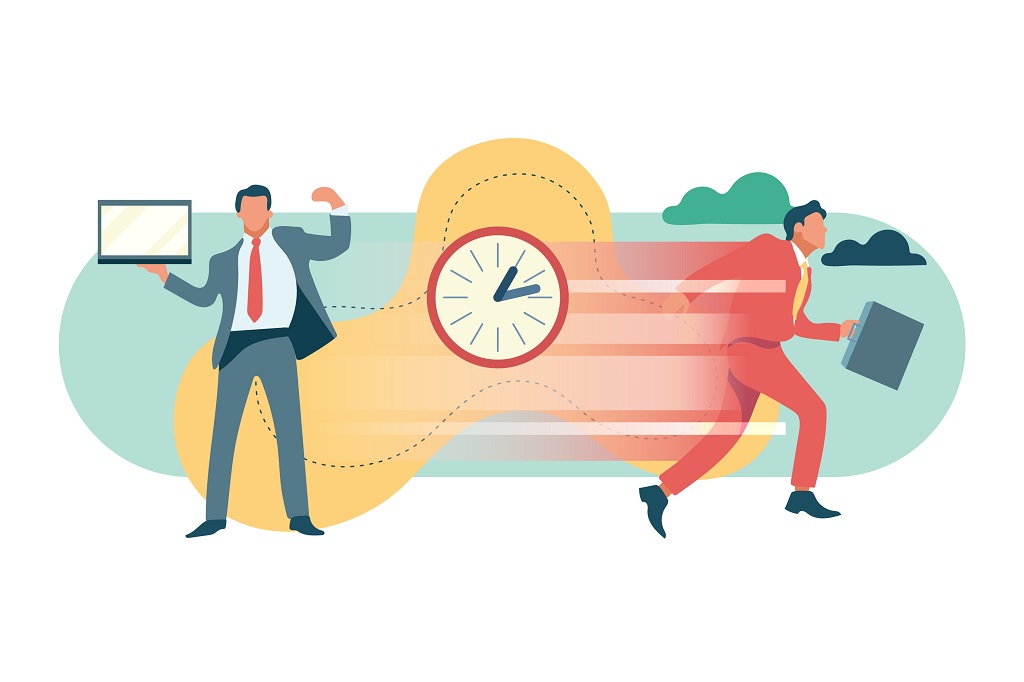Working with music can be a great way to enhance productivity and make tasks more enjoyable. Here are some tips to make the most out of your work sessions with music. Firstly, it is important to choose the right genre or style of music that suits your working style and tasks. Everyone has different preferences, so experiment with different genres such as classical, jazz, or electronic to find what helps you focus and stay motivated. Additionally, creating playlists or using music streaming platforms can help you discover new songs and keep your work sessions fresh. Another tip is to use instrumental or lyric-free music, as lyrics can sometimes be distracting and interfere with your concentration. Instrumental music, on the other hand, can provide a soothing background without diverting your attention. Furthermore, using headphones or earphones can help create a personal bubble, blocking out external noises and distractions, allowing you to fully immerse yourself in your work. Moreover, timing your music breaks can be beneficial to maintain productivity. Take short breaks between tasks to enjoy a few minutes of music, which can refresh your mind and recharge your energy. Additionally, adjusting the volume of your music to a moderate level is important. While loud music can be exciting, it can also be overwhelming and hinder your ability to concentrate effectively. Lastly, be mindful of the impact of music on your productivity. If you notice that certain music is hindering your focus or making you feel sluggish, it may be necessary to switch to a different genre or work in silence for a while. In conclusion, working with music can contribute to a more productive and enjoyable work environment. By selecting the right genre, utilizing instrumental music, using headphones, taking timed music breaks, adjusting the volume, and being mindful of its impact, you can enhance your productivity and create a more positive work experience.

Music at work: Mood and volume
Music at work can have a significant impact on the mood and productivity of employees. The right music can create a positive and uplifting atmosphere, while the wrong choice can have the opposite effect. When it comes to the mood that music sets, the genre and tempo play a crucial role. Upbeat and lively tunes can energize employees and boost their motivation levels. For instance, listening to pop or rock music with catchy rhythms can increase excitement and enthusiasm in the workplace. On the other hand, slower and more calming music can help create a relaxed and focused ambiance, ideal for tasks that require concentration. Classical or instrumental tracks, for example, are often preferred in environments where deep focus and attention to detail are necessary.
Apart from the mood, the volume of music also plays a vital role in its impact on the workplace. The volume level needs to strike the right balance between being audible enough to create a pleasant background ambiance without being too loud to cause distractions. Music that is too loud can disrupt concentration and communication among employees, leading to decreased productivity. On the contrary, music that is too soft may not create the desired atmosphere or even go unnoticed, failing to provide the intended benefits. Thus, finding the perfect volume level is crucial to ensure that the music enhances the work environment without becoming a hindrance.
In addition to mood and volume, the type of work being performed should also be considered when deciding on the music to play. Different tasks require different levels of focus, and thus, the music choice should align with the nature of the work. For tasks that involve problem-solving, creativity, or brainstorming, instrumental music or ambient sounds can be more suitable. These types of music provide a gentle background that enhances concentration and creativity without distracting the mind with lyrics or complex melodies. On the other hand, for tasks that involve repetitive or monotonous work, music with lyrics or more engaging beats can help alleviate boredom and increase motivation.
Furthermore, the preferences and tastes of the employees should also be taken into account when selecting music for the workplace. Allowing employees to have a say in the choice of music can create a sense of ownership and increase job satisfaction. This can be done by creating shared playlists or allowing individuals to take turns in selecting the music. By involving employees in the decision-making process, it is more likely that the music will be well-received and contribute positively to the work environment.
In conclusion, music can have a significant impact on the mood and productivity of employees in the workplace. The genre, tempo, volume, and type of work being performed all play a role in determining the effect of music. Whether it be creating an upbeat and energetic atmosphere or a calm and focused ambiance, music has the power to enhance the work environment. However, it is crucial to strike the right balance between providing a pleasant background ambiance and avoiding distractions. By considering the preferences of employees and aligning the music with the nature of the tasks, employers can harness the potential benefits of music at work and create a more enjoyable and productive workplace.
The right rhythms at the right time
Rhythms have an inexplicable way of finding their place in the world, seamlessly fitting into the tapestry of life. These harmonious patterns of sound and movement have the power to uplift spirits, evoke emotions, and transcend boundaries. The significance of rhythm lies not only in its ability to create melodies but also in its perfect timing. The right rhythms at the right time can be transformative, uniting individuals, cultures, and even nations. Music, dance, and the beating of a heart all embody the essence of rhythm, resonating with the human experience and reminding us of the interconnectedness of our existence.
In the realm of music, rhythm acts as the heartbeat of each composition, dictating the pace and providing structure. From the gentle sway of a lullaby to the lively beats of a samba, each genre boasts its own unique rhythm, setting the stage for a particular mood or narrative. The right rhythm can transport us to distant lands, evoke memories long forgotten, or inspire us to move our bodies in sync with the melody. Whether it is the pulsating rhythm of a drum or the delicate plucking of strings, music has the power to create an intricate web of emotions, connecting individuals from diverse backgrounds.
Similarly, dance, as a physical expression of rhythm, has the ability to captivate audiences and transcend language barriers. The fluid movements, synchronized steps, and graceful gestures of dancers speak a universal language that traverses cultural boundaries. Whether it is the fiery flamenco of Spain, the elegant ballet of Russia, or the energetic bhangra of India, each dance form embodies its own rhythm, telling stories that captivate and inspire. The right rhythm at the right time in dance can invoke a sense of unity and evoke a collective response, fostering a shared experience that transcends individual differences.
Beyond the realm of music and dance, rhythm can also be found in the very essence of life itself. The human heart beats in a constant rhythm, a metronome that keeps us alive and connected to the world. This natural rhythm is a reminder of the delicate balance that exists within us and in the greater universe. Just as the heart beats in perfect synchrony, so too does the world around us, with cycles of day and night, the changing of seasons, and the ebb and flow of tides. Nature’s rhythms guide our lives, reminding us of the interconnectedness of all living beings and the importance of being in tune with the world around us.
In a world filled with chaos and discord, the right rhythms at the right time have the power to bring about harmony and unity. They remind us that despite our differences, we are all part of a greater whole, connected by the universal language of rhythm. Whether it is through music, dance, or the beating of a heart, rhythm has the ability to transcend boundaries and bring people together. It is a reminder that in this vast and diverse world, we are all united by the threads of rhythm that weave through our lives. So let us embrace the right rhythms at the right time, for they hold the key to a more harmonious and connected existence.

Music for routine tasks
Music has long been recognized as a powerful tool that can enhance our daily routines and make mundane tasks more enjoyable. Whether we are cooking, cleaning, or exercising, music has the ability to transform these routine activities into enjoyable experiences. The impact of music on our mood and productivity is undeniable, as it has the ability to uplift our spirits and motivate us to complete tasks with greater efficiency. With the right rhythm and melody, music can transport us to a world of focus and creativity, making even the most monotonous tasks seem exciting and fulfilling.
One of the most significant benefits of listening to music during routine tasks is its ability to increase our productivity and efficiency. When we engage in repetitive activities such as cleaning or organizing, it is easy to lose focus and become bored. However, by incorporating music into these tasks, we can create a more stimulating environment that keeps our minds engaged and energized. Studies have shown that certain types of music, such as upbeat and fast-paced tunes, can boost our energy levels and elevate our mood, resulting in enhanced performance and productivity. By providing a pleasant distraction, music helps to alleviate the monotony of routine tasks, allowing us to complete them more efficiently and effectively.
Moreover, music has a profound impact on our emotional well-being, and incorporating it into our daily routines can significantly improve our mood. Have you ever noticed how listening to your favorite song instantly puts a smile on your face? This is because music has the power to trigger the release of endorphins, the feel-good hormones that promote happiness and reduce stress. By creating a positive emotional state, music can help us approach routine tasks with a more optimistic mindset, making them appear less burdensome and more enjoyable. Whether it’s the soothing melodies of classical music or the energetic beats of pop and rock, music has the ability to elevate our mood and provide a sense of joy and fulfillment.
Furthermore, music has the incredible ability to transport us to a world of focus and creativity, enabling us to tap into our potential and perform routine tasks with a greater sense of purpose. Certain genres of music, such as instrumental or ambient music, have been found to enhance concentration and cognitive abilities. The absence of lyrics in these genres allows our minds to solely focus on the task at hand, without any distractions. Additionally, music can stimulate our creativity, allowing us to think outside the box and approach routine tasks with a fresh perspective. This creative stimulation is particularly beneficial for tasks that require problem-solving or innovative thinking, as it helps us break free from rigid patterns and explore new possibilities.
In conclusion, music has the incredible power to transform routine tasks into enjoyable and fulfilling experiences. By increasing our productivity, improving our mood, and enhancing our focus and creativity, music becomes an invaluable companion in our daily lives. Whether we are cooking, cleaning, or exercising, the right choice of music can invigorate our spirits and make even the most mundane tasks exciting. So, the next time you find yourself dreading a routine chore, turn up the volume and let music work its magic.
Music for concentrated work
Music has long been recognized as a powerful tool for enhancing productivity and concentration during work. With the ability to evoke emotions, stimulate the mind, and drown out distractions, the right choice of music can greatly contribute to a focused and immersive work environment. Whether it’s classical compositions, instrumental tracks, or even ambient sounds, music has the potential to create an atmosphere conducive to deep concentration and optimal performance.
The impact of music on concentration can be attributed to several factors. Firstly, music has the ability to alter our mood and emotions, which in turn affects our cognitive abilities. By listening to music that evokes positive emotions, such as joy or tranquility, individuals can enter a state of mind that promotes focus and mental clarity. Additionally, music can help to regulate our arousal levels, keeping us alert and engaged in our tasks without becoming overwhelmed or fatigued.
One genre of music that is often recommended for concentrated work is classical music. Renowned composers such as Mozart, Bach, and Beethoven have created timeless pieces that are known for their soothing and harmonious qualities. The absence of lyrics in classical music allows for a distraction-free experience, enabling individuals to delve into their work without the interference of words or narratives. The gentle and melodic tunes create a calming environment that aids in concentration, allowing the mind to stay focused on the task at hand.
Instrumental tracks are another popular choice for those seeking music to enhance their concentration. By eliminating the distraction of lyrics, instrumental music allows individuals to fully immerse themselves in their work. The absence of words allows the mind to engage with the task at hand, without the additional cognitive load of processing language. Instrumental tracks can vary from gentle piano melodies to upbeat electronic tunes, catering to different preferences and work environments. The repetitive patterns and rhythms in instrumental music can also have a soothing effect on the brain, helping to maintain a steady focus and flow of work.
For some individuals, ambient sounds can serve as a powerful tool for concentration. Ambient sounds refer to recordings of natural or environmental noises, such as raindrops, ocean waves, or forest sounds. These sounds, often combined with soft background music or white noise, create a serene and peaceful atmosphere that promotes deep focus and relaxation. Ambient sounds can be particularly beneficial in noisy or chaotic work environments, as they effectively mask distractions and provide a sense of tranquility. The sounds of nature can transport individuals to a serene mental space, allowing them to concentrate on their work without being disturbed by external disturbances.
It is important to note that the effectiveness of music for concentrated work can vary from person to person. While some individuals find music to be a valuable aid for concentration, others may find it distracting or disruptive. Personal preference, the nature of the task at hand, and the individual’s cognitive style all play a role in determining the suitability of music for concentration. Experimenting with different genres and styles of music can help individuals identify what works best for them and optimize their work environment accordingly.
In conclusion, music has the potential to greatly enhance concentration and productivity during work. Whether it’s classical compositions, instrumental tracks, or ambient sounds, the right choice of music can create a focused and immersive work environment. By evoking positive emotions, regulating arousal levels, and eliminating distractions, music can be a valuable tool for deep concentration and optimal performance. However, it is important to recognize that the effectiveness of music for concentration can vary from person to person, and finding the right balance is crucial to achieving the desired results.

Creativity and music
Creativity and music are intertwined in a beautiful dance, an ethereal realm where artists can freely express themselves and unleash their imagination. Music has always been a powerful medium for creative expression, allowing musicians to transcend the boundaries of language and culture, connecting with listeners on a deeply emotional level. It is through this artistic outlet that musicians can experiment, innovate, and create something truly unique. Whether it’s composing a symphony, writing a catchy pop song, or improvising a jazz solo, creativity is the lifeblood that flows through the veins of music.
At its core, music is an art form that relies heavily on creative thinking. Musicians must constantly push the boundaries of what is considered conventional, exploring new melodies, harmonies, and rhythms that captivate their audience. It is this constant pursuit of innovation and originality that drives musicians to create music that resonates with people from all walks of life. Creativity is the fuel that ignites their passion, propelling them to experiment with different sounds and techniques to craft their unique musical identity.
One of the most fascinating aspects of music is its ability to evoke emotions and tell stories without the need for words. Through the creative use of melodies, harmonies, and dynamics, musicians can paint vivid pictures in the minds of their listeners. Whether it’s a hauntingly beautiful piano melody that conveys melancholy or an energetic guitar riff that sparks excitement, music has the power to transport us to different emotional landscapes. It is through this creative expression that musicians can connect with their audience on a level that surpasses language barriers, cultural differences, and societal norms.
Furthermore, creativity in music extends beyond the composition and performance aspects. Musicians also have the freedom to experiment with various instruments, styles, and genres, merging different musical traditions to create something entirely new. This fusion of diverse influences and sounds not only enriches the musical landscape but also challenges the boundaries of what is considered “normal” or “acceptable” in music. Through this creative exploration, musicians can break free from the constraints of traditional genres, creating innovative and groundbreaking music that pushes the boundaries of what is deemed possible.
Moreover, creativity in music is not limited to the artists themselves. It also extends to the listeners who interpret and engage with the music. Each person brings their own unique perspective and emotional experiences to the listening process, allowing them to form their own connections and meaning from the music. This interaction between the artist and the audience creates a dynamic and ever-evolving relationship, where creativity is not limited to the initial creation of the music but also extends to how it is perceived and experienced by individuals.
In conclusion, creativity and music are inseparable partners, forever intertwined in a harmonious embrace. Music provides a canvas for artists to unleash their creative spirit, pushing the boundaries of what is considered normal or acceptable. It is through this creative expression that musicians can connect with listeners on a deeply emotional level, transcending the limitations of language and culture. Creativity in music is not only limited to the composition and performance aspects but also extends to the listeners who interpret and engage with the music. It is this collaborative and ever-evolving relationship between artist and audience that fuels the endless possibilities of creativity in music.
Relaxed and stress-free in the office thanks to music
Music has the incredible power to transform our moods and create a sense of relaxation, even in the most stressful environments. This is particularly true in the office, where deadlines, meetings, and constant pressure can easily lead to high levels of stress and anxiety. However, thanks to the presence of music, employees can find solace and tranquility amidst the chaos. Whether it is through the use of headphones or a shared playlist, the melodic tunes that fill the office space bring about a sense of calmness and help individuals escape from the overwhelming demands of their daily tasks.
One of the most remarkable aspects of music is its ability to transport us to another world, allowing our minds to wander and momentarily forget about the weight of our responsibilities. In an office setting, this can be a much-needed respite from the constant pressure to perform and deliver results. As the soothing melodies flow through the air, they create a harmonious backdrop that drowns out the noise of ringing phones and clattering keyboards. The stress that once seemed so overwhelming suddenly dissipates, replaced by a sense of tranquility and focus.
Moreover, music has the unique ability to enhance our productivity and creativity. Numerous studies have shown that listening to music while working can improve concentration and boost cognitive performance. By creating a pleasant and uplifting environment, music helps to stimulate the brain and keep it engaged, allowing individuals to work more efficiently and effectively. The rhythmic beats and melodic tunes have a way of unlocking the mind’s potential, allowing for fresh ideas and innovative solutions to flow effortlessly.
Beyond its impact on productivity, music also creates a sense of camaraderie among coworkers. Sharing a playlist can be a great way to connect and bond with colleagues, fostering a positive work environment. As individuals discover shared musical interests, conversations and connections are sparked, creating a sense of unity and collaboration. This sense of unity is crucial for a stress-free and relaxed office environment, as it promotes a supportive network and encourages individuals to help one another through challenging times.
Furthermore, music can also serve as a powerful tool to manage and alleviate stress and anxiety. It has been widely acknowledged that music has therapeutic effects on our mental wellbeing. The soothing melodies and lyrics can act as a form of emotional release, helping individuals to cope with the demands and pressures of the workplace. As the music fills the air, it calms the mind, slows down the heart rate, and promotes a sense of inner peace. This newfound tranquility allows employees to approach their tasks with a clearer mind and a renewed sense of purpose.
In conclusion, music has the remarkable ability to transform a stressful and chaotic office into a relaxed and stress-free zone. By creating a harmonious atmosphere, it allows employees to find solace amidst the demands of their daily tasks. Whether it is through enhancing productivity, fostering camaraderie, or alleviating stress, music plays a crucial role in creating a positive work environment. So, plug in those headphones or turn up the speakers, and let the power of music guide you to a more relaxed and stress-free office experience.


